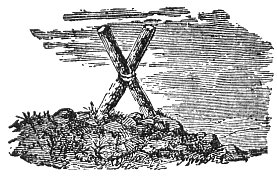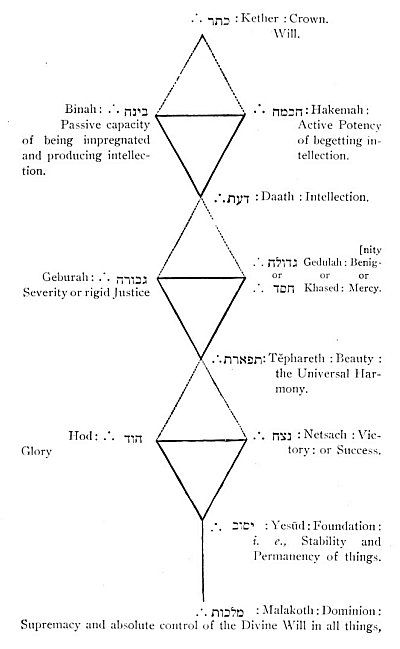“Hughes de Payens himself had not that keen and far-sighted intellect nor that grandeur of purpose which afterward distinguished the military founder of another soldiery that became formidable to kings. The Templars were unintelligent and therefore unsuccessful Jesuits.
“Their watchword was, to become wealthy, in order to buy the world. They became so, and in 1312 they possessed in Europe
p. 820
alone more than nine thousand seignories. Riches were the shoal on which they were wrecked. They became insolent, and unwisely showed their contempt for the religious and social institutions which they aimed to overthrow. Their ambition was fatal to them. Their projects were divined and prevented. [Rome, more intolerant of heresy than of vice and crime, came to fear the Order, and fear is always cruel. It has always deemed philosophical truth the most dangerous of heresies, and has never been at a loss for a false accusation, by means of which to crush free thought.] Pope Clement V. and King Philip le Bel gave the signal to Europe, and the Templars, taken as it were in an immense net, were arrested, disarmed, and cast into prison. Never was a Coup d’Etat accomplished with a more formidable concert of action. The whole world was struck with stupor, and eagerly waited for the strange revelations of a process that was to echo through so many ages.
“It was impossible to unfold to the people the conspiracy of the Templars against the Thrones and the Tiara. It was impossible to expose to them the doctrines of the Chiefs of the Order. [This would have been to initiate the multitude into the secrets of the Masters, and to have uplifted the veil of Isis. Recourse was therefore had to the charge of magic, and denouncers and false witnesses were easily found. When the temporal and spiritual tyrannies unite to crush a victim they never want for serviceable instruments.] The Templars were gravely accused of spitting upon Christ and denying God at their receptions, of gross obscenities, conversations with female devils, and the worship of a monstrous idol.
“The end of the drama is well known, and how Jacques de Molai and his fellows perished in the flames. But before his execution, the Chief of the doomed Order organized and instituted what afterward came to be called the Occult, Hermetic, or Scottish Masonry. In the gloom of his prison, the Grand Master created four Metropolitan Lodges, at Naples for the East, at Edinburg for the West, at Stockholm for the North, and at Paris for the South.” [The initials of his name, J∴ B∴ M∴ found in the same order in the first three Degrees, are but one of the many internal and cogent proofs that such was the origin of modern Free-Masonry. The legend of Osiris was revived and adopted, to symbolize the destruction of the Order, and the resurrection of
p. 821
[paragraph continues] Khu_ru_m, slain in the body of the Temple, of KHU_RU_M ABAI, the Master, as the martyr of fidelity to obligation, of Truth and Conscience, prophesied the restoration to life of the buried association.]
“The Pope and the King soon after perished in a strange and sudden manner. Squin de Florian, the chief denouncer of the Order, died assassinated. In breaking the sword of the Templars, they made of it a poniard; and their proscribed trowels thence-forward built only tombs.”
[The Order disappeared at once. Its estates and wealth were confiscated, and it seemed to have ceased to exist. Nevertheless it lived, under other names and governed by unknown Chiefs, revealing itself only to those who, in passing through a series of Degrees, had proven themselves worthy to be entrusted with the dangerous Secret. The modern Orders that style themselves Templars have assumed a name to which they have not the shadow of a title.]
“The Successors of the Ancient Adepts Rose-Croix, abandoning by degrees the austere and hierarchial Science of their Ancestors in initiation, became a Mystic Sect, united with many of the Templars, the dogmas of the two intermingling, and believed themselves to be the sole depositaries of the secrets of the Gospel of St. John, seeing in its recitals an allegorical series of rites proper to complete the initiation.

Moe is the founder of GnosticWarrior.com. He is a father, husband, author, martial arts black belt, and an expert in Gnosticism, the occult, and esotericism.






